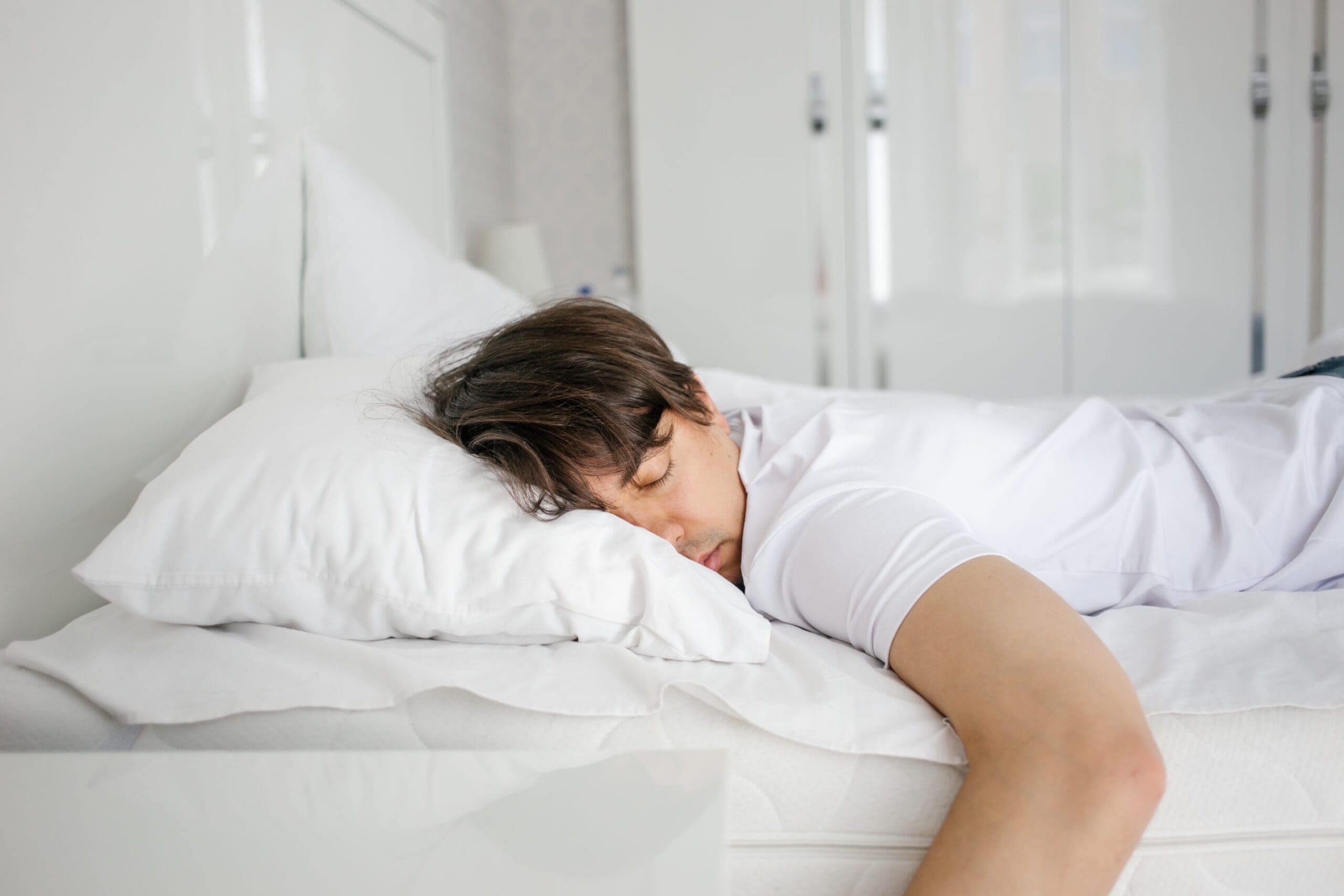Can individuals receive a full night’s rest by recognizing sleep disturbances to only get proper muscle function and improve their health?
Table of Contents
What Causes Sleep Disturbances?
As many people are in a constant state of motion and trying to complete their tasks, they will feel extremely exhausted and tempted to take a quick nap on their bed. However, a short nap can sometimes turn longer and thus affect a person’s sleep schedule. At the same time, when the body is ready to go to sleep, sometimes the mind is wide awake, causing people to become more tired throughout the day. These types of sleep disturbances can not only affect the person but also affect the body as well. In today’s article, we will be looking at what causes sleep disturbances, how improper sleep affects the muscles in the body, and how to incorporate various ways to reduce sleep disturbances. We discuss with certified medical providers who inform our patients how various sleep disturbances can affect the individual and the body. While asking informed questions to our associated medical providers, we advise patients to include various techniques to reduce sleep disturbances that can impact the musculoskeletal system. Dr. Alex Jimenez, D.C., encompasses this information as an academic service. Disclaimer.
How often do you feel general aches and pains in your upper and lower extremities that make you sluggish? Do you experience constant headaches that make it difficult to get out of bed? Or do you feel stiffness in your neck, shoulder, and back in the morning that goes away throughout the day? When it comes to the correlation between what causes sleep disturbance to the body, it can vary from person to person, depending on the situation. Let’s say a person is dealing with a stressful situation that causes them to be unable to get a good night’s rest; that would be known as a sleep disturbance. Sleep disturbances, by definition, are causes that can impact a person’s fundamental aspects of their sleep hygiene. (Cormier, 1990) Understandably, everyone is trying to practice good sleep hygiene; however, when environmental factors cause overlapping risk profiles to develop into sleep disturbances, they can affect the body. These can range from cognitive disorders to musculoskeletal conditions and chronic conditions.
How Does Improper Sleep Affect The Muscles & Body?
When classifying sleep disorders that can cause improper sleep in the body, four major categories can be the issue. They are:
- Disorders that initiate and maintain sleep
- Excessive somnolence disorders
- Sleep-wake schedule disorders
- Various dysfunctions are associated with sleep (Weitzman, 1981)
These four categories can cause many people to develop improper sleeping habits that can affect their bodies and muscles. Symptoms like fatigue correlate with poor sleep quality and can increase muscle pain intensity. At the same time, many individuals dealing with fatigue can experience muscle pain intensity associated with comorbidities that can make a person feel miserable. (Boggero et al., 2022) Environmental factors affecting the musculoskeletal system can correlate with metabolic disorders and thus affect sleep. Additionally, improper sleep and disturbances have been interplayed with metabolic disorders that can increase the risk of obesity, hypertension, insulin resistance and cause many people to have improper sleeping habits and, which, in turn, affects their musculoskeletal system. (Wei et al., 2022) Some of the effects of improper sleep that can affect muscle include:
- Muscle weakness
- Instability
- Muscle pain
- Discomfort
However, when people start to decide to try to improve their sleep schedule and reduce sleep disturbances, many people start to look for ways to get a full night’s rest.
Chronic Pain Chiropractic Care- Video
Ways To Reduce Sleep Disturbances
When trying to improve sleep quality while reducing disturbances, many people start to find ways to incorporate proper sleeping habits. Since sleep’s ultimate goal is to help individuals maintain and improve physical and mental health, many can achieve long-term sleep improvement through appropriate sleep hygiene and modifications. (Baranwal et al., 2023) Some of the ways many people can reduce sleep disturbances are the following:
- Exercise
- Sleeping on the right mattress
- Establish a bedtime routine
- Limit electronic screen time
- Reduce eating and drinking caffeinated drinks before bed
Incorporating these small changes allows the individual to have proper sleeping habits and reduce overlapping risk profiles affecting the body and musculoskeletal function.
Finding The Right Mattress
Everyone knows that finding the best mattress is important for a good night’s rest. It is also important for people to find the right mattress to stay asleep and reduce musculoskeletal conditions. When it comes to finding the right mattress, it is important to ensure that the mattress’s firmness plays a huge role in improving a person’s sleep quality and reducing pain and disability for people dealing with sleep disorders associated with musculoskeletal conditions. (Caggiari et al., 2021) This allows the individual to have few sleep disturbances and helps them have that full 8 hours of sleep.

Reduce Screen Time
The next way to reduce sleep disturbances is by reducing screen time to prevent it from affecting sleep habits. Since many people are more technologically advanced, it is hard not to doom scroll at night. When many people are on their phones in bed, it can lead to sleep onset latency and cause issues like daytime tiredness. (Brautsch et al., 2023) The best way to reduce tiredness and sleep issues at night is by allowing 30 minutes to digitally disconnect and place any electronic away from the bed to ensure that the 8 hours of sleep is met. This, in turn, allows the brain to turn off and disassociate from anything digital or social media. When it comes to incorporating proper sleep habits, making small changes in a person’s routine can become beneficial in the long run as not only the body can relax but also the muscles.
References
Baranwal, N., Yu, P. K., & Siegel, N. S. (2023). Sleep physiology, pathophysiology, and sleep hygiene. Prog Cardiovasc Dis, 77, 59-69. doi.org/10.1016/j.pcad.2023.02.005
Boggero, I. A., Pickerill, H. M., & King, C. D. (2022). Fatigue in Adults with Chronic Arthralgia/Myalgia in the Temporomandibular Region: Associations with Poor Sleep Quality, Depression, Pain Intensity, and Future Pain Interference. J Oral Facial Pain Headache, 36(2), 155-163. doi.org/10.11607/ofph.2944
Brautsch, L. A., Lund, L., Andersen, M. M., Jennum, P. J., Folker, A. P., & Andersen, S. (2023). Digital media use and sleep in late adolescence and young adulthood: A systematic review. Sleep Med Rev, 68, 101742. doi.org/10.1016/j.smrv.2022.101742
Caggiari, G., Talesa, G. R., Toro, G., Jannelli, E., Monteleone, G., & Puddu, L. (2021). What type of mattress should be chosen to avoid back pain and improve sleep quality? Review of the literature. J Orthop Traumatol, 22(1), 51. doi.org/10.1186/s10195-021-00616-5
Cormier, R. E. (1990). Sleep Disturbances. In H. K. Walker, W. D. Hall, & J. W. Hurst (Eds.), Clinical Methods: The History, Physical, and Laboratory Examinations (3rd ed.). www.ncbi.nlm.nih.gov/pubmed/21250242
Wei, Z., Chen, Y., & Upender, R. P. (2022). Sleep Disturbance and Metabolic Dysfunction: The Roles of Adipokines. International Journal of Molecular Sciences, 23(3), 1706. doi.org/10.3390/ijms23031706
Weitzman, E. D. (1981). Sleep and its disorders. Annu Rev Neurosci, 4, 381-417. doi.org/10.1146/annurev.ne.04.030181.002121
Disclaimer
Post Disclaimer
Professional Scope of Practice *
The information herein on "The Connection Between Sleep Disturbances and Muscle Function" is not intended to replace a one-on-one relationship with a qualified health care professional or licensed physician and is not medical advice. We encourage you to make healthcare decisions based on your research and partnership with a qualified healthcare professional.
Blog Information & Scope Discussions
Our information scope is limited to Chiropractic, musculoskeletal, physical medicines, wellness, contributing etiological viscerosomatic disturbances within clinical presentations, associated somatovisceral reflex clinical dynamics, subluxation complexes, sensitive health issues, and/or functional medicine articles, topics, and discussions.
We provide and present clinical collaboration with specialists from various disciplines. Each specialist is governed by their professional scope of practice and their jurisdiction of licensure. We use functional health & wellness protocols to treat and support care for the injuries or disorders of the musculoskeletal system.
Our videos, posts, topics, subjects, and insights cover clinical matters, issues, and topics that relate to and directly or indirectly support our clinical scope of practice.*
Our office has reasonably attempted to provide supportive citations and has identified the relevant research study or studies supporting our posts. We provide copies of supporting research studies available to regulatory boards and the public upon request.
We understand that we cover matters that require an additional explanation of how it may assist in a particular care plan or treatment protocol; therefore, to further discuss the subject matter above, please feel free to ask Dr. Alex Jimenez, DC, or contact us at 915-850-0900.
We are here to help you and your family.
Blessings
Dr. Alex Jimenez DC, MSACP, RN*, CCST, IFMCP*, CIFM*, ATN*
email: coach@elpasofunctionalmedicine.com
Licensed as a Doctor of Chiropractic (DC) in Texas & New Mexico*
Texas DC License # TX5807, New Mexico DC License # NM-DC2182
Licensed as a Registered Nurse (RN*) in Florida
Florida License RN License # RN9617241 (Control No. 3558029)
License Compact Status: Multi-State License: Authorized to Practice in 40 States*
Presently Matriculated: ICHS: MSN* FNP (Family Nurse Practitioner Program)
Dr. Alex Jimenez DC, MSACP, RN* CIFM*, IFMCP*, ATN*, CCST
My Digital Business Card


